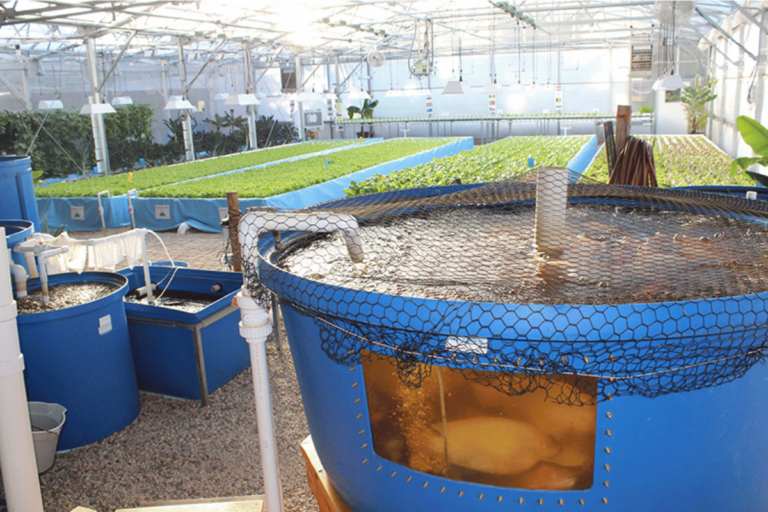How Aquaponics Works
Aquaponics is a sustainable farming technique that links aquaculture (raising fish) with hydroponics (growing plants without soil). In an aquaponic system, fish waste gives nutrients to the plants, and the plants support filtering and cleaning the fish’s water. It creates a closed-loop, symbiotic system that maximizes resource efficiency and minimizes waste.
The principal components of an aquaponic system include a fish tank, a grow bed, a water pump, and a filtration system. Fish are raised in the tank, and their waste, rich in ammonia, is transferred by beneficial bacteria into nitrates, which minister nutrients for the plants. The water is then circulated from the fish tank to the grow bed, wherever the plants absorb the nutrients and filter the water. The clean water is returned to the fish tank, completing the cycle.
Aquaponics offers several benefits, including reduced water usage, quicker plant growth, and the ability to grow food year-round. This method is ideal for urban farming, small-scale gardening, and sustainable food production.
Setting Up Your Own Aquaponics System
Setting up an aquaponics system requires choosing the right components and ensuring that the system is balanced and sustainable. Start by selecting an appropriate location with adequate light, space, and access to electricity and water. A greenhouse or indoor setup with grow lights can provide the necessary conditions for year-round production.
Select a fish tank appropriate for your system’s size and the type of fish you wish to raise. Common fish species for aquaponics include tilapia, trout, and catfish. Ensure the tank is made of food-safe materials and has a secure cover to prevent fish from jumping out.
Choose a grow bed that can take the mass of the plants and the growing medium, such as gravel or expanded clay pellets. The grow bed should be positioned above or adjacent to the fish tank, allowing easy water circulation. Install a water pump to transfer water from the fish container to the grow bed and a filtration system to remove solids and maintain water quality.
Introduce beneficial bacteria to the system by adding a bacterial starter culture or allowing the system to cycle naturally. This process, known as nitrification, converts fish waste into plant-available nutrients. To guarantee a healthy and balanced system, supervise water condition parameters, such as pH, ammonia, nitrite, and nitrate levels.
Select plants that thrive in aquaponics, such as leafy greens, herbs, and certain vegetables. Plant the seeds in the grow bed and provide adequate light and nutrients. Regularly feed the fish and monitor their health, adjusting the system to maintain optimal conditions.
Explore More Gardening Tips and Ideas
- Growing Bonsai: Tips for Miniature Tree Enthusiasts
- Buying Bonsai: Tips for Selecting Your Perfect Tree
- Bonsai Potting: Essential Tips for Tree Care Success
- Bonsai Maintenance: Essential Care for Tiny Trees
- Mastering the Art of Shaping Bonsai: A Beginner’s Guide
Source: Basics Of Aquaponics


